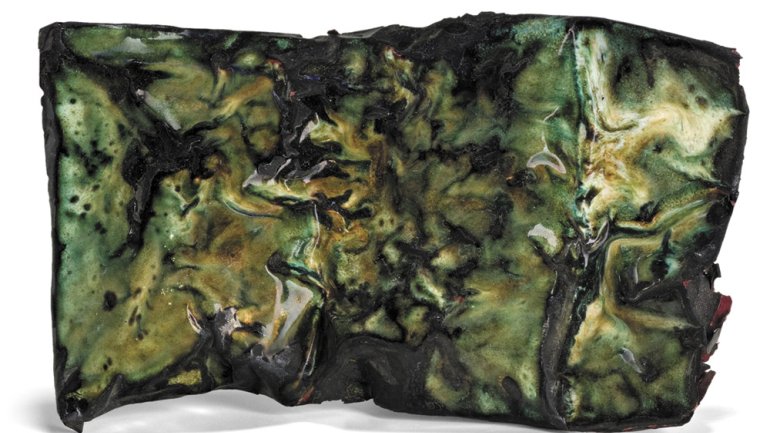Experimentalist
Experimentalist
San Francisco Museum of Craft + Design
Fred Ball Enamels
San Francisco, California
July 24 – October 4, 2009
The inventive spirit of Fred Uhl Ball (1945–1985), one of the great innovators in the field of 20th-century enameling—the art of fusing glass to metal—is celebrated in this exhibition organized on the occasion of the Enamelist Society’s biennial conference in Oakland. The son of two artists—the noted ceramist and educator Carleton Ball and the graphic artist and enamelist Kathryn Uhl Ball—Fred Ball found his way to art, and especially enamels, as a child, and was participating in shows and winning awards by the time he was in his early teens. Ball's career spanned 26 years, beginning when he was 14, and ending with his untimely death at 40, from injuries he suffered during a mugging. For much of that time his work was characterized by intense experimentation. This exhibition, curated by Hal Nelson and Bernard Jazzar, whose recent traveling survey, “Painting with Fire,” included Ball’s work, presents a selection of the artist’s most experimental pieces produced between 1970 and 1985.
areas enamelists usually try
to avoid) and the use of liquid enamel materials. He is among those credited with transforming enameling from its traditional association with small size and preciousness, to a larger, sometimes epic scale consistent with postwar painting and sculpture. He spread the word in Experimental Techniques in Enameling (1972), the first technical book to advocate such an approach to enameling, and it influenced a generation of young makers in the field to liberate their practices and stimulate their imaginations.
Ball’s techniques included torch firing, metal collage, exploration of firescale (the burnt areas enamelists usually try to avoid) and the use of liquid enamel materials. He is among those credited with transforming enameling from its traditional association with small size and preciousness, to a larger, sometimes epic scale consistent with postwar painting and sculpture. He spread the word in Experimental Techniques in Enameling (1972), the first technical book to advocate such an approach to enameling, and it influenced a generation of young makers in the field to liberate their practices and stimulate their imaginations.
From the late 1970s on Ball took on a number of public commissions for Sacramento, his hometown, of which the most famous is The Way Home, one of the largest murals ever created in enamel on copper. Based on aerial views of the city, it comprises 1,488 individual tiles, each 12 by 12 inches, on a 6-by-62-foot installation on the wall of a parking garage. At the time of his death, at the peak of his career, Ball was working on a mural for a local hospital.
But even as he focused on commissioned work, Ball continued his artistic explorations on smaller-scale pieces, and these enamel-on-copper panels are highlighted in this show. Ball embraces collage in an untitled 1985 gold-colored work , and bold rhythmic graphics, in Jukebox Boogie, 1974, with its jigsaw puzzle-like composition, and the use of ordinary objects as a source for form in Pillow, ca. 1970s. Two Gold Sea Scrolls, 1976–77, has a Klimt-like richness. In such works, wielding enamels like an abstract expressionist, Ball combined his unorthodox techniques with refined craftsmanship, steadily expanding the boundaries of his medium. His works are not at
all out of place in the 21st century.
The 33-page catalog is $20 (plus shipping) from [email protected].




